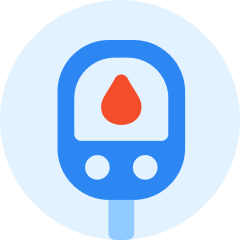For every person whose death is caused by smoking, there are 30 people living with a smoking-related disease. Smoking can damage the whole cardiovascular system in a matter of years. It can cause numerous diseases like lung and oral cancers, stroke, heart and lung diseases, and a number of deadly illnesses. But it’s not only smokers who are at risk of deadly diseases caused by smoking. People who were exposed to cigarette smoke are also at risk. Read on to learn more about lung disease in non-smokers.
How Secondhand Smoke Harms Non-Smokers

Secondhand smoke is the exposure to the combination of smoke coming from a cigarette and the exhaled smoke of a smoker. There is no such thing as a risk-free level of exposure to cigarette smoke. Lung disease in non-smokers and other health conditions may be the effects of secondhand smoke, the same diseases as smokers have and sometimes even worse.
Non-smokers, especially infants, children, pregnant women, and adults in general are at a higher risk with constant exposure to cigarette smoke.
- Infants and children who are exposed to secondhand smoke are at risk of developing numerous health problems including more frequent and severe asthma attacks, ear or respiratory infections and SIDS (Sudden Infant Death Syndrome).
- Smoking while pregnant or being exposed to cigarette smoke on a daily basis may lead to stillborns and infant deaths.
- Adults who have constant exposure to cigarette smoke while at work or at home may suffer from lung cancer, stroke or coronary heart disease.
Health Conditions and Lung Disease in Non-Smokers
Over the years, a number of health risks and diseases can be linked to exposure to secondhand smoke.
Health effects on children:
- Respiratory symptoms
- Compromised lung function
- Middle ear disease
- Lower respiratory illness
- Sudden Infant Death Syndrome
Health effects on adults:
- Lung cancer
- Nasal irritation
- Coronary heart disease
- Reproductive effects on women, like low birth weight
- Stroke
Secondhand Smoke Effects on Cardiovascular System
- Exposure to secondhand smoke has a 25-30% risk of developing heart disease on non-smokers.
- Non-smokers may develop a risk of stroke by 20-30%.
- Secondhand smoke exposure may also lead to premature deaths because of stroke or heart diseases.
Secondhand smoke exposure may also affect the blood and blood vessels which may lead to a heart attack.
- When the smoke enters your body, it may interfere with your vascular systems including your heart and blood, increasing the risk of a heart attack.
- Even the briefest exposures may damage your blood vessels, causing your blood platelets to become stickier. This sudden change may lead to a heart attack and sometimes can be fatal.
Cigarette Smoke Exposure May Lead to Lung Disease in Non-Smokers
Adults who never smoked a cigarette in their life are still at risk of having lung cancer by simply being exposed to cigarette smoke.
- A non-smoker’s constant exposure to secondhand smoke is inhaling the same amount of chemicals and toxins that cause lung cancer as smokers.
- Even the briefest exposures to cigarette smoke may damage cells which set off the process of cancer in motion.
- Frequent exposure to secondhand smoke at home or at work increases the risk of lung cancer and lung cancer deaths.
- Just like active smoking, the longer exposure you have a day to cigarette smoke, the higher the risk of lung disease in non-smokers.

SIDS May Be Linked to Secondhand Smoking
SIDS or Sudden Infant Death Syndrome is the leading cause of death in otherwise healthy infants. It will be sudden and unexpected, leaving no hints of health problems, literally unexplained death of a baby in their first year. However, evidence linking SIDS to secondhand smoking has been gathered over the years.
- Women who smoke during pregnancy may increase the risk of SIDS on their child.
- Newborn babies exposed to secondhand smoke are at a greater risk of SIDS.
- The chemicals found in cigarette smoke are likely to affect the part of the brain that controls breathing.
- Infants who died of SIDS have higher amounts of nicotine found in their lungs than babies who died of other causes.
Lung Disease in Non-Smoker Children
Lung-related health problems in children are often linked with secondhand smoking.
- Children with parents who smoke develop smaller lungs than normal children who are not exposed to nicotine smoke every day. They tend to get sick easily and more often than normal. They are also at risk to have bronchitis and pneumonia.
- Coughing and wheezing are common with children constantly exposed to secondhand smoke.
- Everyday exposure to cigarette smoke can trigger asthma and the child may suffer severe and more frequent asthma attacks. Severe asthma attacks are very dangerous and sometimes fatal.
- Children who live with a smoker at home often have ear infections, have more fluid in their ears, and often need to be drained by ear tube surgeries.
How To Protect Yourself from Secondhand Smoke
The only way to ensure that you will be able to protect yourself from lung disease in non-smokers is to achieve a hundred percent smoke-free environment. You can achieve that by:
As adults:
- If you are indoors, opening a window or propping a fan by the door may help a little. But there is still an underlying danger in inhaling the toxins from the smoke even with good ventilation. It is best to not allow smoking indoors altogether.
- Distance yourself from a smoker. It is best to stay away from a smoking person with a distance of 9 meters.
- Wear a mask or cover your nose and mouth when traveling.
- Do not stay in a smoker’s lounge or area.
As pregnant mothers and after giving birth:
- Do not smoke or expose yourself to secondhand smoke during pregnancy.
- After giving birth, do not allow smoking inside the house or anywhere near the baby.
- Ensure good ventilation in the baby’s room and always place your baby on his or her back during naps.
As parents to young children:
- Prevent cigarette smoking anywhere inside your house or near your child.
- Do not allow smoking inside the car even if the windows are open.
- You should check your child’s school to make sure its tobacco-free
- If dining outside, make sure to check that there is a non-smoking policy.
Key Takeaway
Smoking is a choice. Although a number of precautions and warnings are given throughout the years, there are those who struggle to quit smoking. Equally so, quitting is also a choice and journey that’s easier for some. But it’s also important to know that lung disease in non-smokers occurs too. And so it’s best to keep your lungs healthy by adopting a healthy lifestyle.
Learn more about maintaining lung health, here.


























